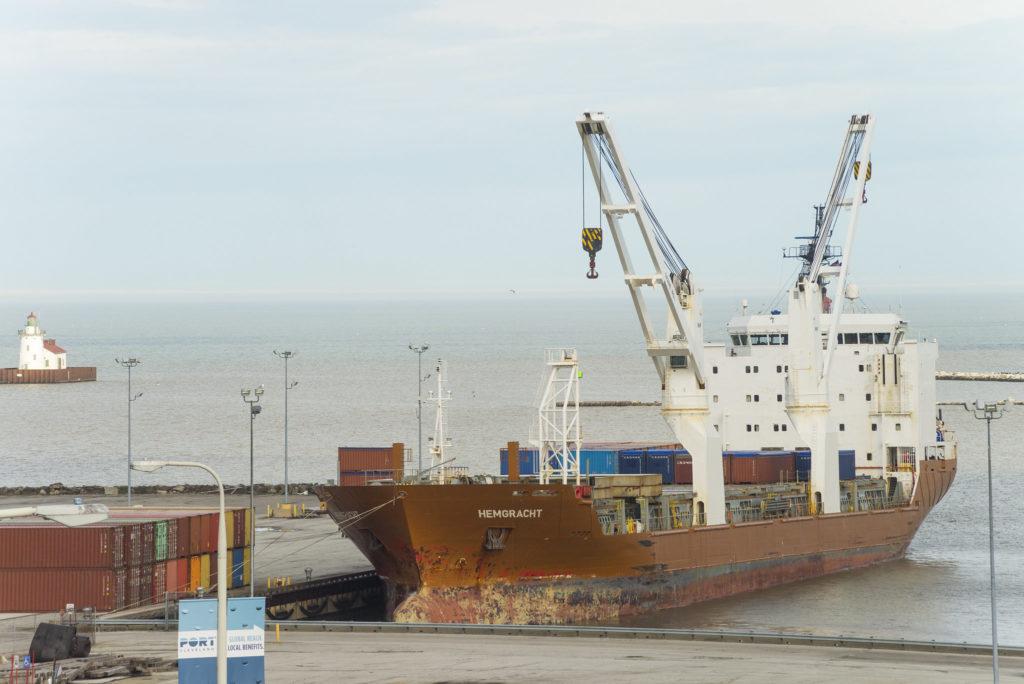As recently as five years ago, the maritime industry in Cleveland was facing a crisis that threatened to shut down commerce at the Port of Cleveland – putting at risk $3.5 billion in annual economic activity and more than 20,000 jobs. The problem wasn’t the specter of tariffs, labour issues, or anything one might traditionally suspect – the threat was sediment, and where to put it while keeping commerce flowing and local water sources clean.
As context, consider that every year, the U.S. Army Corps of Engineers (USACE) must dredge more than 200,000 cubic yards of sediment from the Cuyahoga riverbed to keep maritime business moving in Northeast Ohio.
But recently, finding a place to dispose of that dredged material had become increasingly difficult. Traditionally, it was placed into confined disposal facilities (CDFs), but this method was at risk because the CDFs were nearing capacity.
At the time, some in government suggested simply dumping the sediment into the open waters of Lake Erie. This was a no-go in the view of the Port of Cleveland and many other stakeholders due to serious environmental risks from past industrial contamination of the Cuyahoga River. (This situation was made infamous 50 years ago in a 1969 river fire that played a key role in the creation and passage of the Clean Air and Water Act of 1972).
The other option often cited for dealing with the sediment was constructing a new CDF – but at a price tag north of $150 million, this solution was cost prohibitive and lacked a source of revenue to support it.
We at the Port of Cleveland were convinced there had to be an alternate path – one that protected the environment, but avoided the immense cost of a new CDF and still kept business, cargo, and jobs moving through Cleveland Harbor and the Cuyahoga River. Through strategic visioning and some innovative problem solving, the Port developed a three-tiered plan to address the problem:
- Beneficial Use
The Port partners with government, non-profits and businesses to find opportunities to use sediment that traditionally had been permanently placed in CDFs. This includes newly-dredged sediment and sediment previously placed in the CDFs. This sediment is then sold to the construction market – for use such as roadbuilding materials and for infill in demolition. The goal is to sell between 50,000 to 100,000 cubic yards annually – between 25 per cent and 50 per cent of what had previously been placed in the CDF annually.
- Drying & Stacking Sediment
Instead of leaving it in a slurry, the Port now dewaters sediment before placing it in the CDF. This reduces the total volume that must be stored, and it also allows vertical stacking to take advantage of CDF airspace. Our CDFs were created by pile driving steel to create huge basins, and when sediment in slurry form reached the brim of the basin, the CDF’s useful life was over. Drying and stacking allows us to radically decrease the footprint of CDF space consumed by newly placed sediment.
- Future Upstream Sediment Interception
The Port placed a testing device known as a “bedload interceptor” upstream on the bottom of the Cuyahoga River. It collects significant amounts of larger sediment before it makes its way into the shipping channel. Pursuing this largely automated process has the potential to help decrease the amount of sediment that enters the shipping channel by 10 per cent to 20 per cent annually, making a large dent in the problem through a passive device with minimal cost. This integrated, holistic management plan has completely transformed the way we deal with sediment and largely eliminated the threat posed by a lack of CDF capacity.
We are now five years into implementing our strategy, and we expect it to extend the useful life of our existing CDFs by up to 50 years. We have also begun to share methods with others in the hopes that it can be a beneficial model for dealing with dredging well beyond Cleveland.
